Economics Assignment Solution: Chapters 2, 3, and 9 Analysis
VerifiedAdded on 2022/10/06
|21
|1276
|196
Homework Assignment
AI Summary
This economics assignment solution covers key concepts from Chapters 2, 3, and 9. It includes schematic diagrams illustrating relationships between variables, such as economic growth and airborne pollutants, and analyzes curves with changing slopes. The assignment delves into marginal analysis, determining optimal karate class numbers for individuals, and examines the relationship between hours worked and profit. Furthermore, the solution explores production possibility frontiers (PPF) and comparative advantage, along with the impact of innovation. It also addresses supply and demand scenarios, illustrating how changes in salaries, news events, and other factors affect market equilibrium. The assignment utilizes diagrams and calculations to explain the economic concepts.
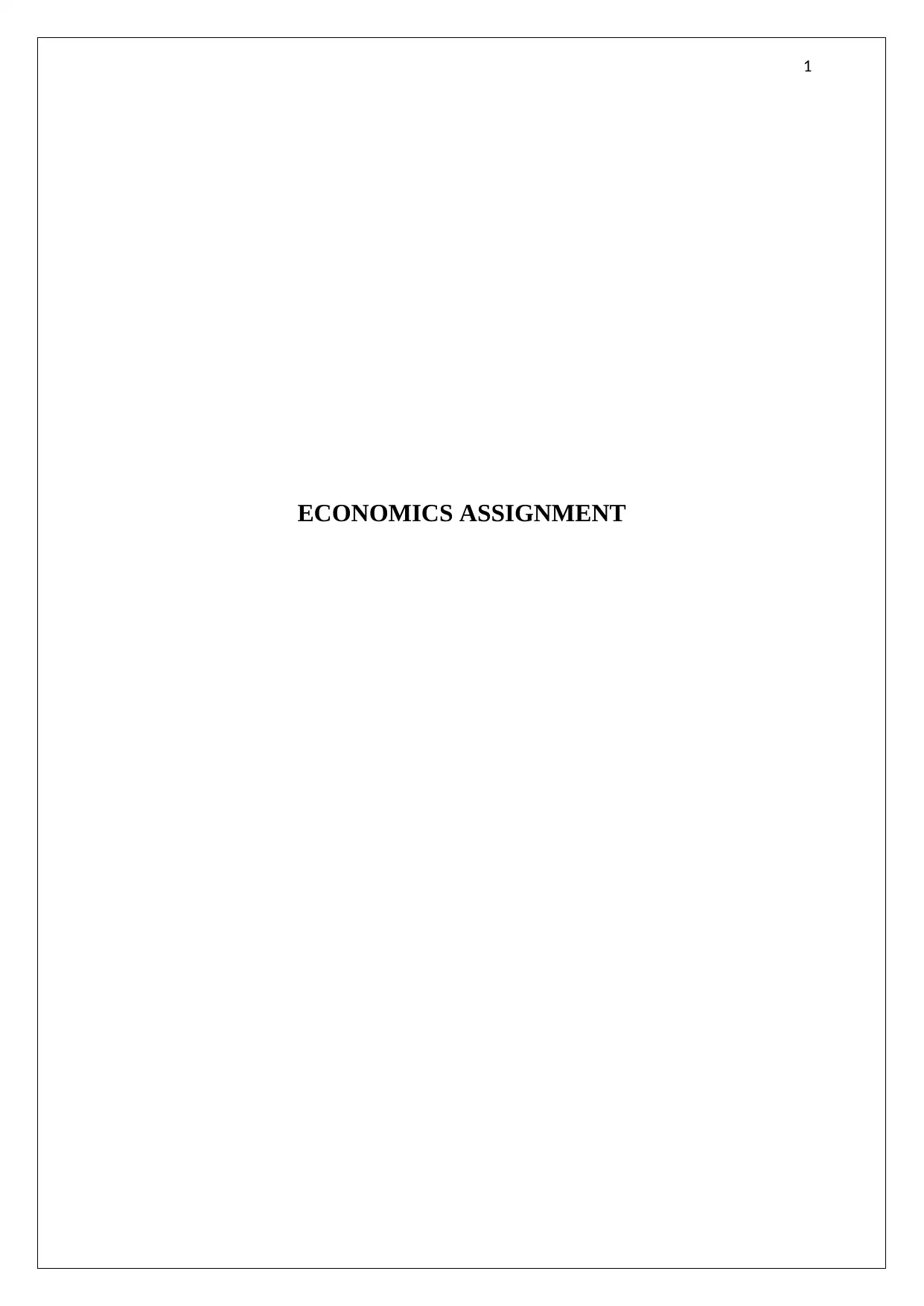
1
ECONOMICS ASSIGNMENT
ECONOMICS ASSIGNMENT
Paraphrase This Document
Need a fresh take? Get an instant paraphrase of this document with our AI Paraphraser
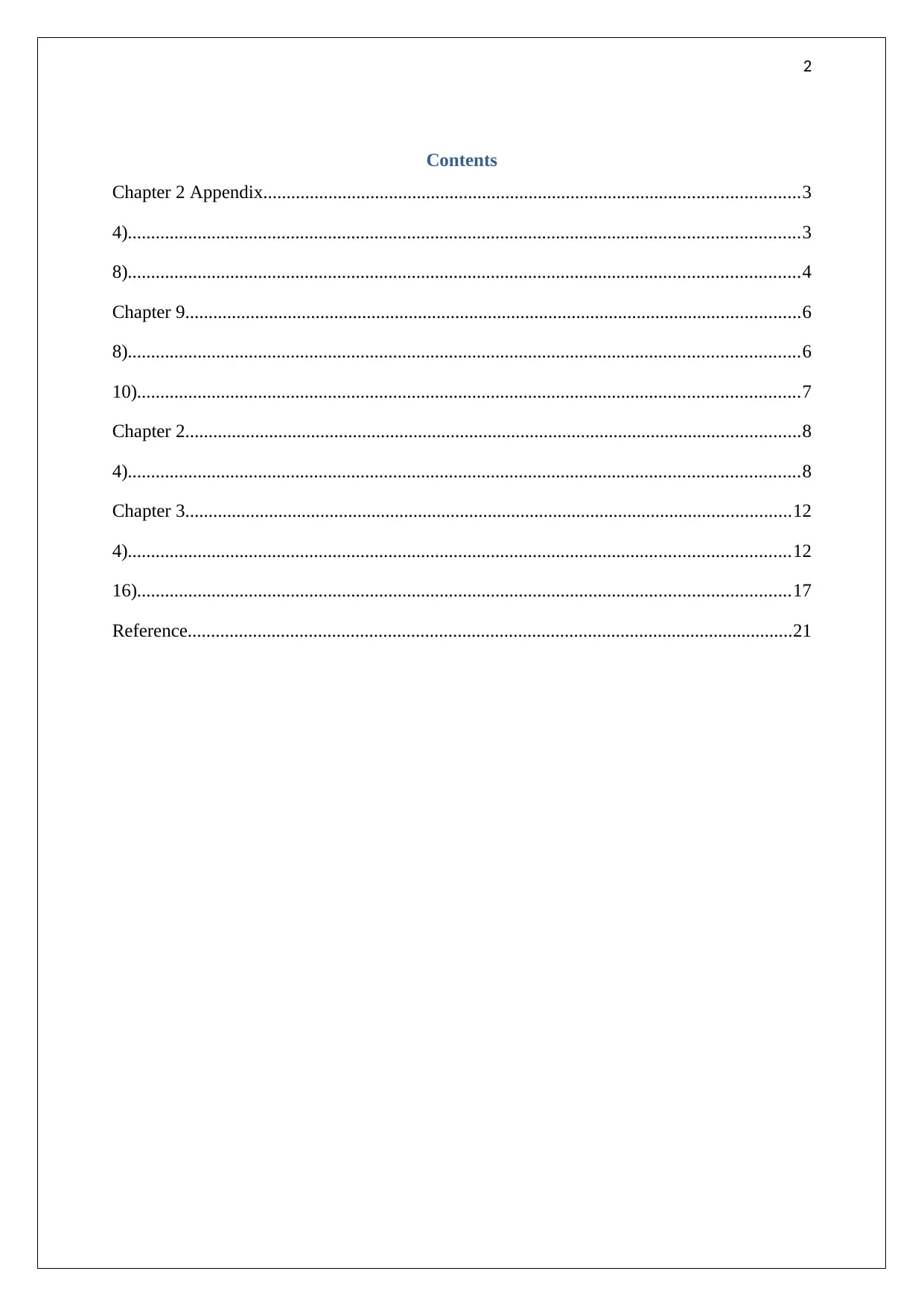
2
Contents
Chapter 2 Appendix...................................................................................................................3
4)................................................................................................................................................3
8)................................................................................................................................................4
Chapter 9....................................................................................................................................6
8)................................................................................................................................................6
10)..............................................................................................................................................7
Chapter 2....................................................................................................................................8
4)................................................................................................................................................8
Chapter 3..................................................................................................................................12
4)..............................................................................................................................................12
16)............................................................................................................................................17
Reference..................................................................................................................................21
Contents
Chapter 2 Appendix...................................................................................................................3
4)................................................................................................................................................3
8)................................................................................................................................................4
Chapter 9....................................................................................................................................6
8)................................................................................................................................................6
10)..............................................................................................................................................7
Chapter 2....................................................................................................................................8
4)................................................................................................................................................8
Chapter 3..................................................................................................................................12
4)..............................................................................................................................................12
16)............................................................................................................................................17
Reference..................................................................................................................................21
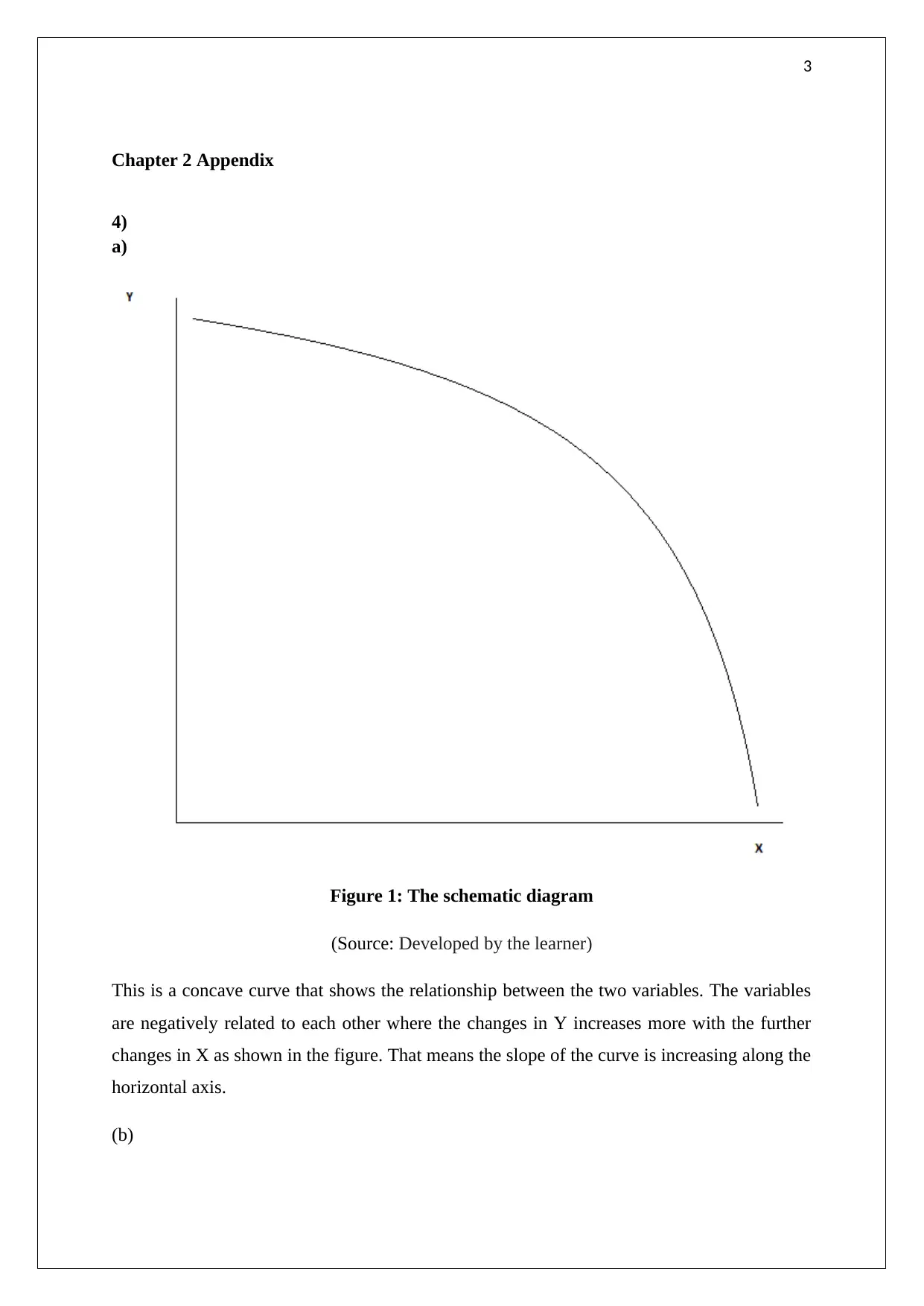
3
Chapter 2 Appendix
4)
a)
Figure 1: The schematic diagram
(Source: Developed by the learner)
This is a concave curve that shows the relationship between the two variables. The variables
are negatively related to each other where the changes in Y increases more with the further
changes in X as shown in the figure. That means the slope of the curve is increasing along the
horizontal axis.
(b)
Chapter 2 Appendix
4)
a)
Figure 1: The schematic diagram
(Source: Developed by the learner)
This is a concave curve that shows the relationship between the two variables. The variables
are negatively related to each other where the changes in Y increases more with the further
changes in X as shown in the figure. That means the slope of the curve is increasing along the
horizontal axis.
(b)
⊘ This is a preview!⊘
Do you want full access?
Subscribe today to unlock all pages.

Trusted by 1+ million students worldwide
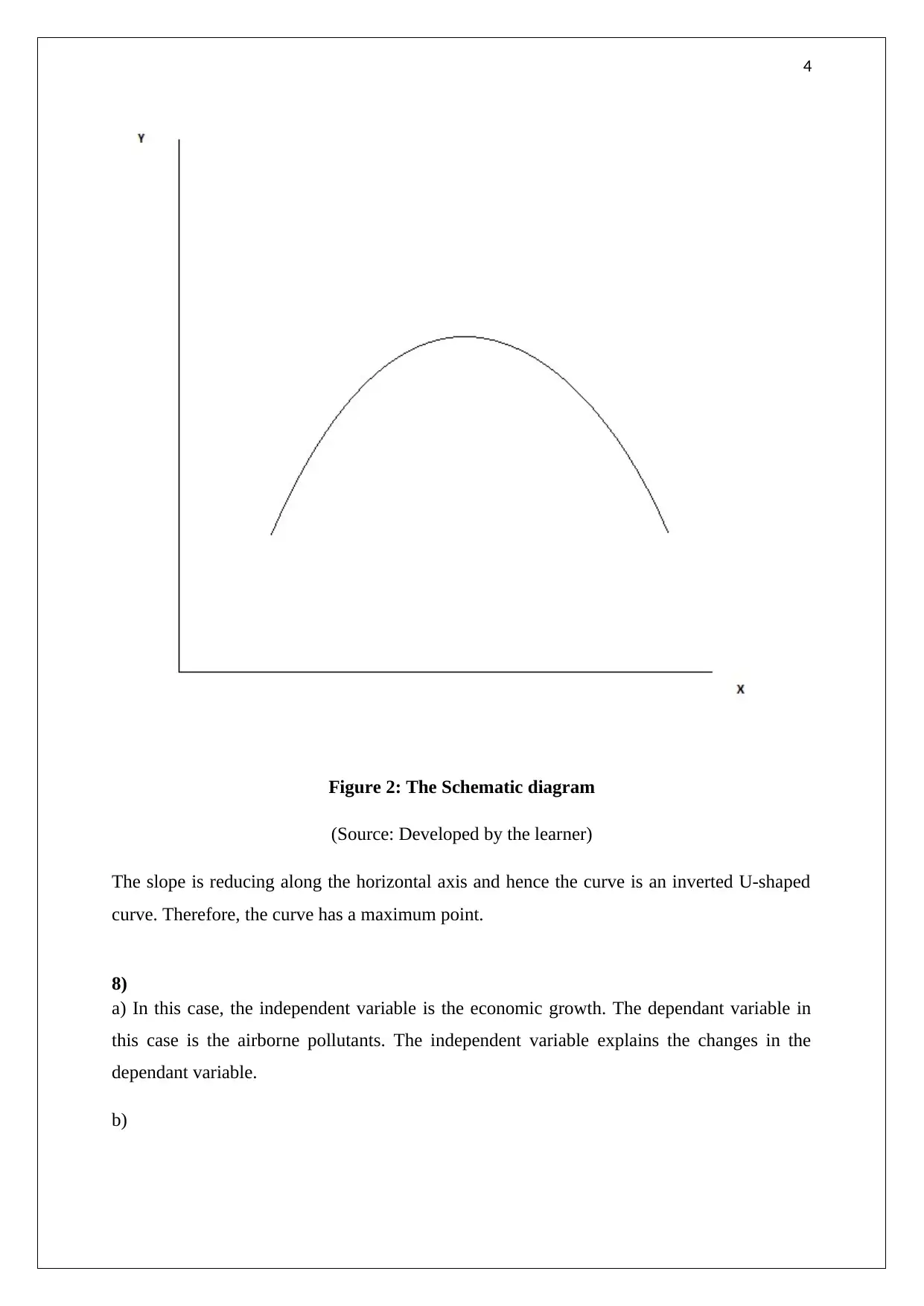
4
Figure 2: The Schematic diagram
(Source: Developed by the learner)
The slope is reducing along the horizontal axis and hence the curve is an inverted U-shaped
curve. Therefore, the curve has a maximum point.
8)
a) In this case, the independent variable is the economic growth. The dependant variable in
this case is the airborne pollutants. The independent variable explains the changes in the
dependant variable.
b)
Figure 2: The Schematic diagram
(Source: Developed by the learner)
The slope is reducing along the horizontal axis and hence the curve is an inverted U-shaped
curve. Therefore, the curve has a maximum point.
8)
a) In this case, the independent variable is the economic growth. The dependant variable in
this case is the airborne pollutants. The independent variable explains the changes in the
dependant variable.
b)
Paraphrase This Document
Need a fresh take? Get an instant paraphrase of this document with our AI Paraphraser
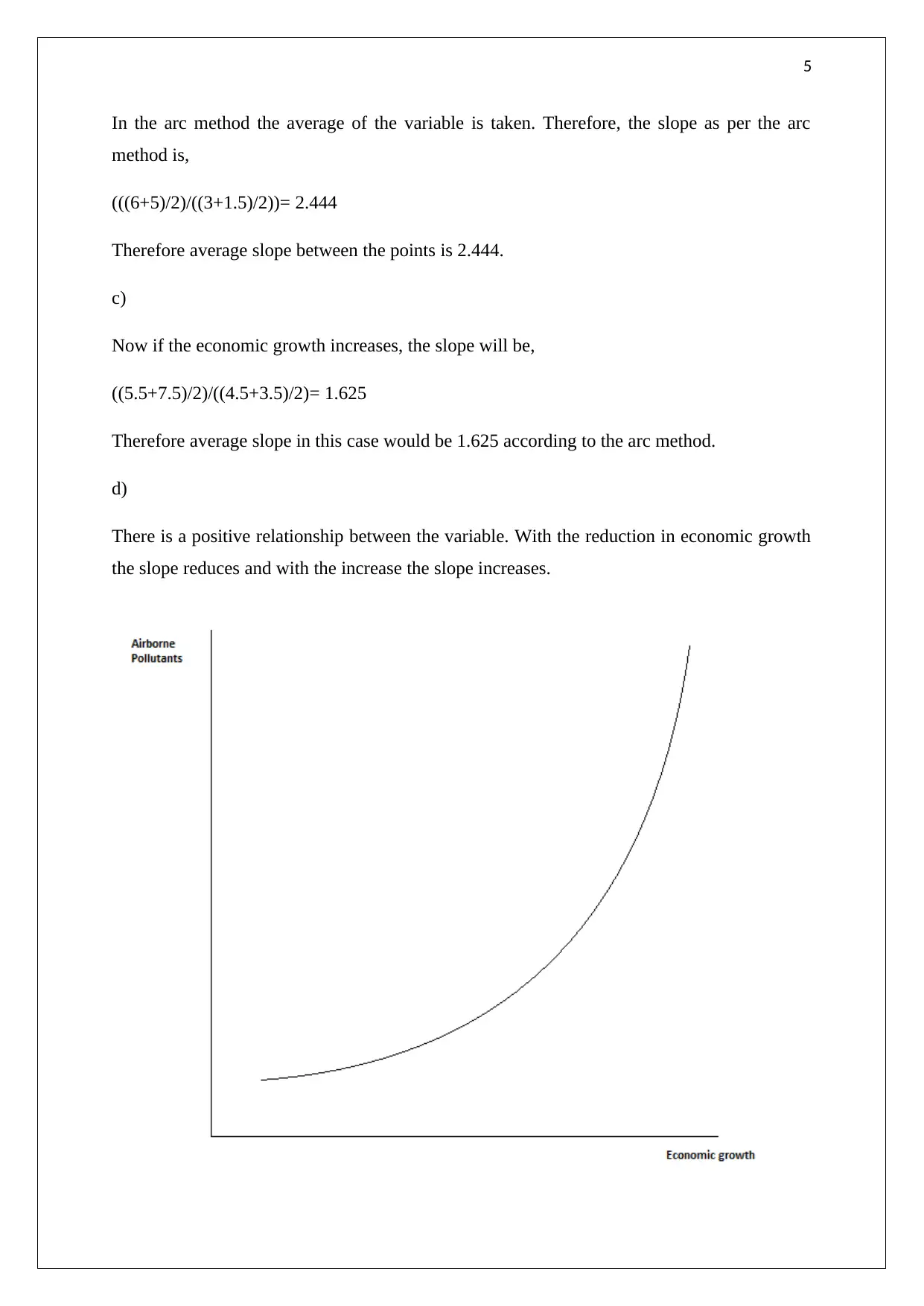
5
In the arc method the average of the variable is taken. Therefore, the slope as per the arc
method is,
(((6+5)/2)/((3+1.5)/2))= 2.444
Therefore average slope between the points is 2.444.
c)
Now if the economic growth increases, the slope will be,
((5.5+7.5)/2)/((4.5+3.5)/2)= 1.625
Therefore average slope in this case would be 1.625 according to the arc method.
d)
There is a positive relationship between the variable. With the reduction in economic growth
the slope reduces and with the increase the slope increases.
In the arc method the average of the variable is taken. Therefore, the slope as per the arc
method is,
(((6+5)/2)/((3+1.5)/2))= 2.444
Therefore average slope between the points is 2.444.
c)
Now if the economic growth increases, the slope will be,
((5.5+7.5)/2)/((4.5+3.5)/2)= 1.625
Therefore average slope in this case would be 1.625 according to the arc method.
d)
There is a positive relationship between the variable. With the reduction in economic growth
the slope reduces and with the increase the slope increases.
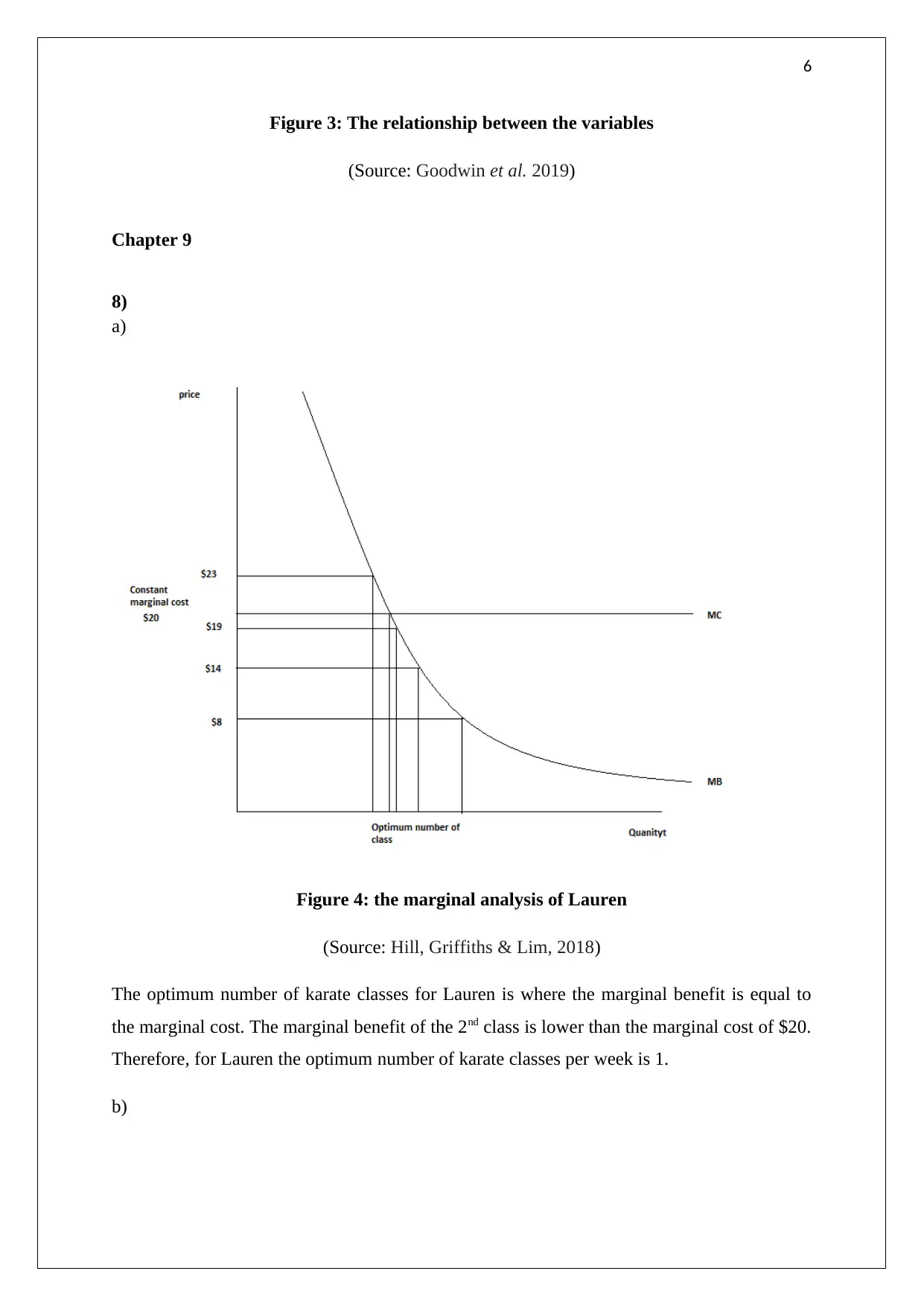
6
Figure 3: The relationship between the variables
(Source: Goodwin et al. 2019)
Chapter 9
8)
a)
Figure 4: the marginal analysis of Lauren
(Source: Hill, Griffiths & Lim, 2018)
The optimum number of karate classes for Lauren is where the marginal benefit is equal to
the marginal cost. The marginal benefit of the 2nd class is lower than the marginal cost of $20.
Therefore, for Lauren the optimum number of karate classes per week is 1.
b)
Figure 3: The relationship between the variables
(Source: Goodwin et al. 2019)
Chapter 9
8)
a)
Figure 4: the marginal analysis of Lauren
(Source: Hill, Griffiths & Lim, 2018)
The optimum number of karate classes for Lauren is where the marginal benefit is equal to
the marginal cost. The marginal benefit of the 2nd class is lower than the marginal cost of $20.
Therefore, for Lauren the optimum number of karate classes per week is 1.
b)
⊘ This is a preview!⊘
Do you want full access?
Subscribe today to unlock all pages.

Trusted by 1+ million students worldwide
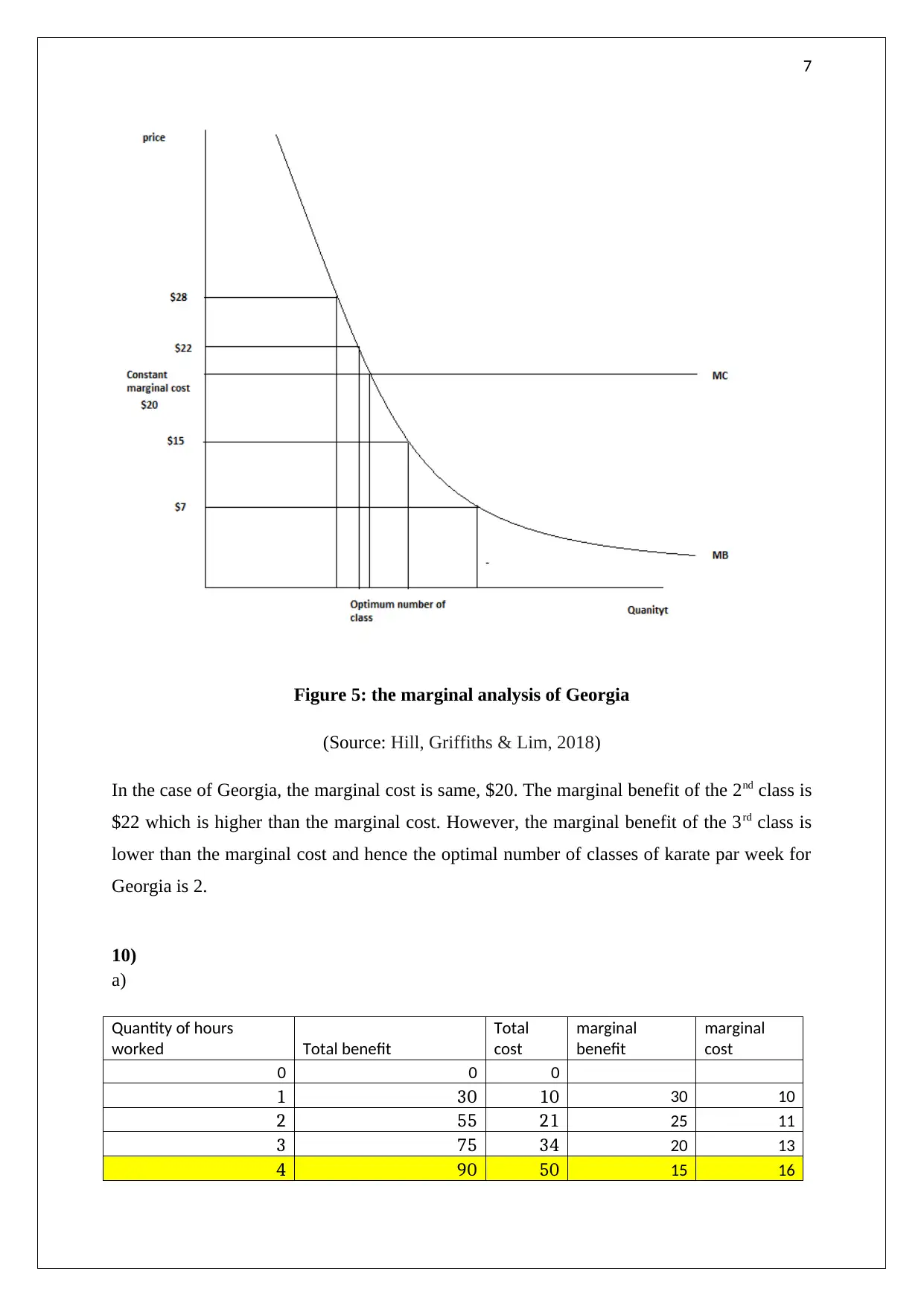
7
Figure 5: the marginal analysis of Georgia
(Source: Hill, Griffiths & Lim, 2018)
In the case of Georgia, the marginal cost is same, $20. The marginal benefit of the 2nd class is
$22 which is higher than the marginal cost. However, the marginal benefit of the 3rd class is
lower than the marginal cost and hence the optimal number of classes of karate par week for
Georgia is 2.
10)
a)
Quantity of hours
worked Total benefit
Total
cost
marginal
benefit
marginal
cost
0 0 0
1 30 10 30 10
2 55 21 25 11
3 75 34 20 13
4 90 50 15 16
Figure 5: the marginal analysis of Georgia
(Source: Hill, Griffiths & Lim, 2018)
In the case of Georgia, the marginal cost is same, $20. The marginal benefit of the 2nd class is
$22 which is higher than the marginal cost. However, the marginal benefit of the 3rd class is
lower than the marginal cost and hence the optimal number of classes of karate par week for
Georgia is 2.
10)
a)
Quantity of hours
worked Total benefit
Total
cost
marginal
benefit
marginal
cost
0 0 0
1 30 10 30 10
2 55 21 25 11
3 75 34 20 13
4 90 50 15 16
Paraphrase This Document
Need a fresh take? Get an instant paraphrase of this document with our AI Paraphraser
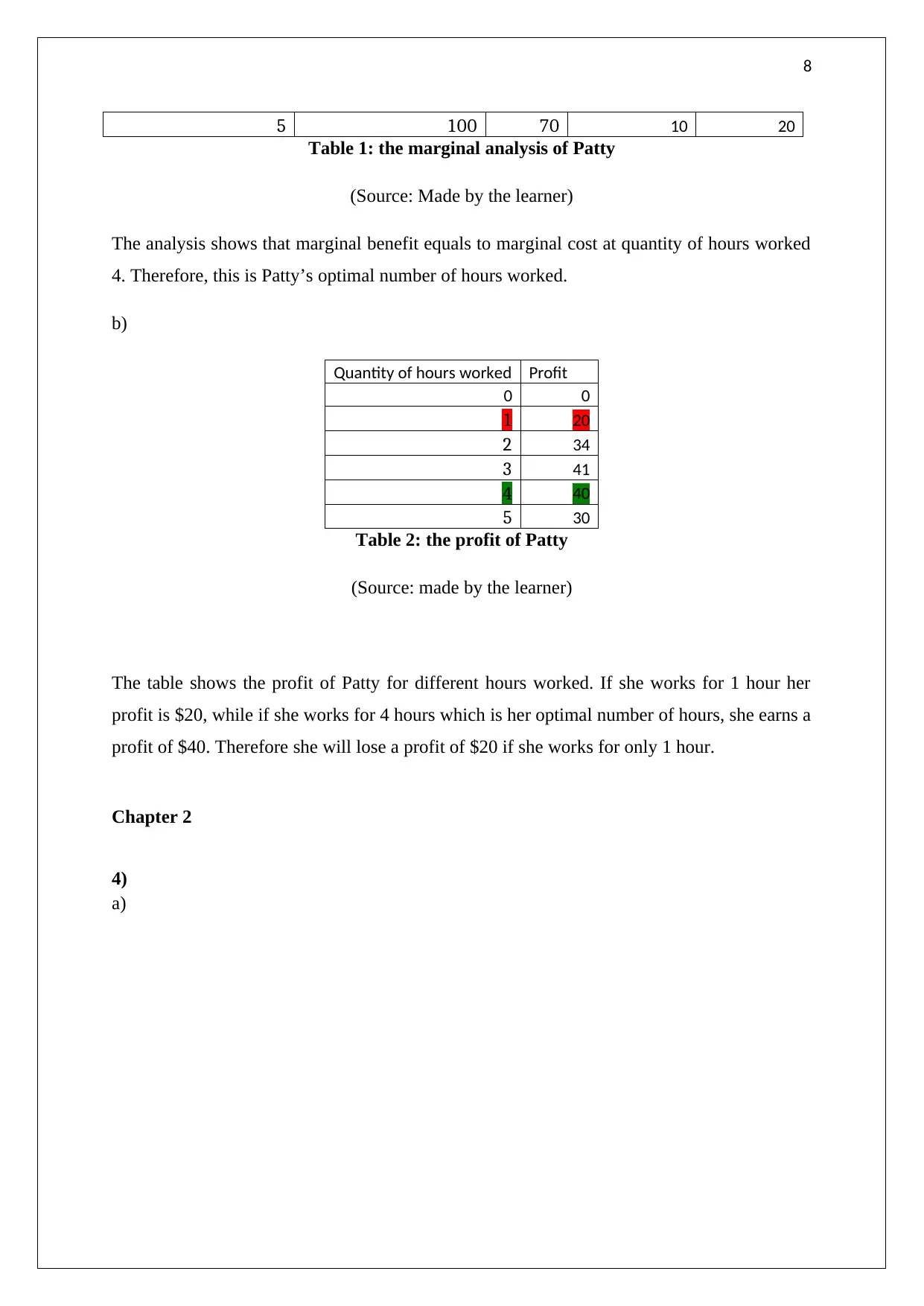
8
5 100 70 10 20
Table 1: the marginal analysis of Patty
(Source: Made by the learner)
The analysis shows that marginal benefit equals to marginal cost at quantity of hours worked
4. Therefore, this is Patty’s optimal number of hours worked.
b)
Quantity of hours worked Profit
0 0
1 20
2 34
3 41
4 40
5 30
Table 2: the profit of Patty
(Source: made by the learner)
The table shows the profit of Patty for different hours worked. If she works for 1 hour her
profit is $20, while if she works for 4 hours which is her optimal number of hours, she earns a
profit of $40. Therefore she will lose a profit of $20 if she works for only 1 hour.
Chapter 2
4)
a)
5 100 70 10 20
Table 1: the marginal analysis of Patty
(Source: Made by the learner)
The analysis shows that marginal benefit equals to marginal cost at quantity of hours worked
4. Therefore, this is Patty’s optimal number of hours worked.
b)
Quantity of hours worked Profit
0 0
1 20
2 34
3 41
4 40
5 30
Table 2: the profit of Patty
(Source: made by the learner)
The table shows the profit of Patty for different hours worked. If she works for 1 hour her
profit is $20, while if she works for 4 hours which is her optimal number of hours, she earns a
profit of $40. Therefore she will lose a profit of $20 if she works for only 1 hour.
Chapter 2
4)
a)
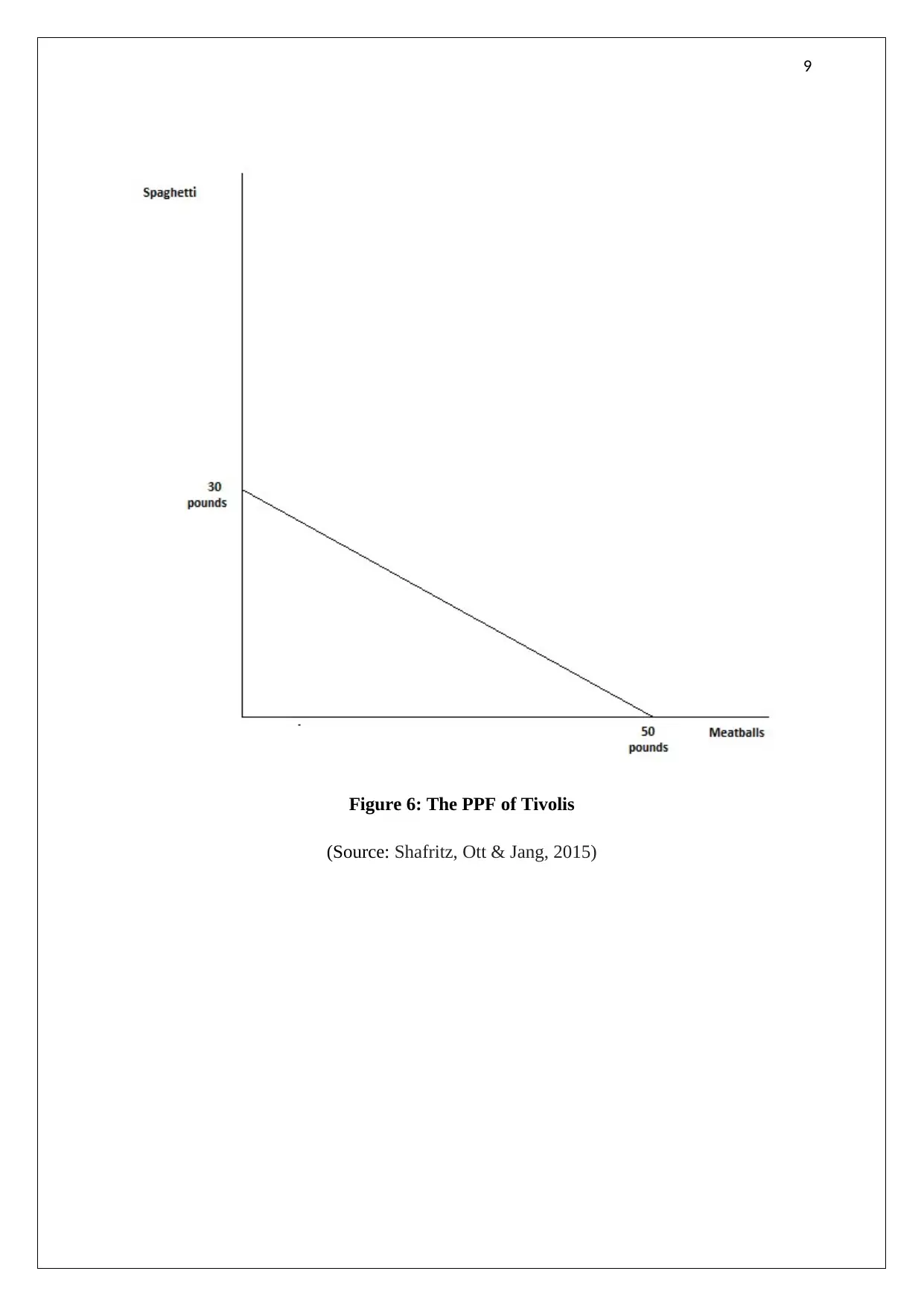
9
Figure 6: The PPF of Tivolis
(Source: Shafritz, Ott & Jang, 2015)
Figure 6: The PPF of Tivolis
(Source: Shafritz, Ott & Jang, 2015)
⊘ This is a preview!⊘
Do you want full access?
Subscribe today to unlock all pages.

Trusted by 1+ million students worldwide
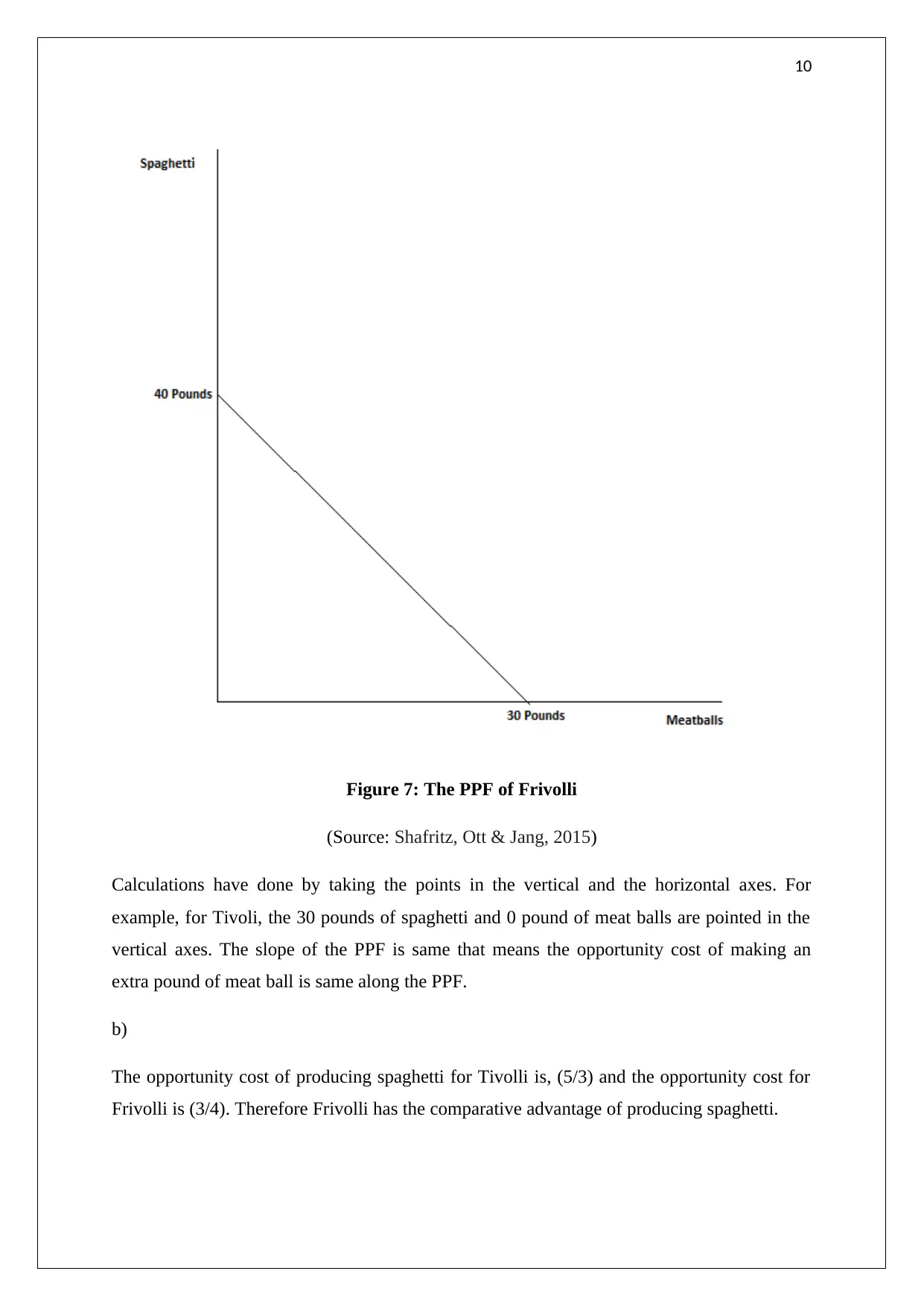
10
Figure 7: The PPF of Frivolli
(Source: Shafritz, Ott & Jang, 2015)
Calculations have done by taking the points in the vertical and the horizontal axes. For
example, for Tivoli, the 30 pounds of spaghetti and 0 pound of meat balls are pointed in the
vertical axes. The slope of the PPF is same that means the opportunity cost of making an
extra pound of meat ball is same along the PPF.
b)
The opportunity cost of producing spaghetti for Tivolli is, (5/3) and the opportunity cost for
Frivolli is (3/4). Therefore Frivolli has the comparative advantage of producing spaghetti.
Figure 7: The PPF of Frivolli
(Source: Shafritz, Ott & Jang, 2015)
Calculations have done by taking the points in the vertical and the horizontal axes. For
example, for Tivoli, the 30 pounds of spaghetti and 0 pound of meat balls are pointed in the
vertical axes. The slope of the PPF is same that means the opportunity cost of making an
extra pound of meat ball is same along the PPF.
b)
The opportunity cost of producing spaghetti for Tivolli is, (5/3) and the opportunity cost for
Frivolli is (3/4). Therefore Frivolli has the comparative advantage of producing spaghetti.
Paraphrase This Document
Need a fresh take? Get an instant paraphrase of this document with our AI Paraphraser
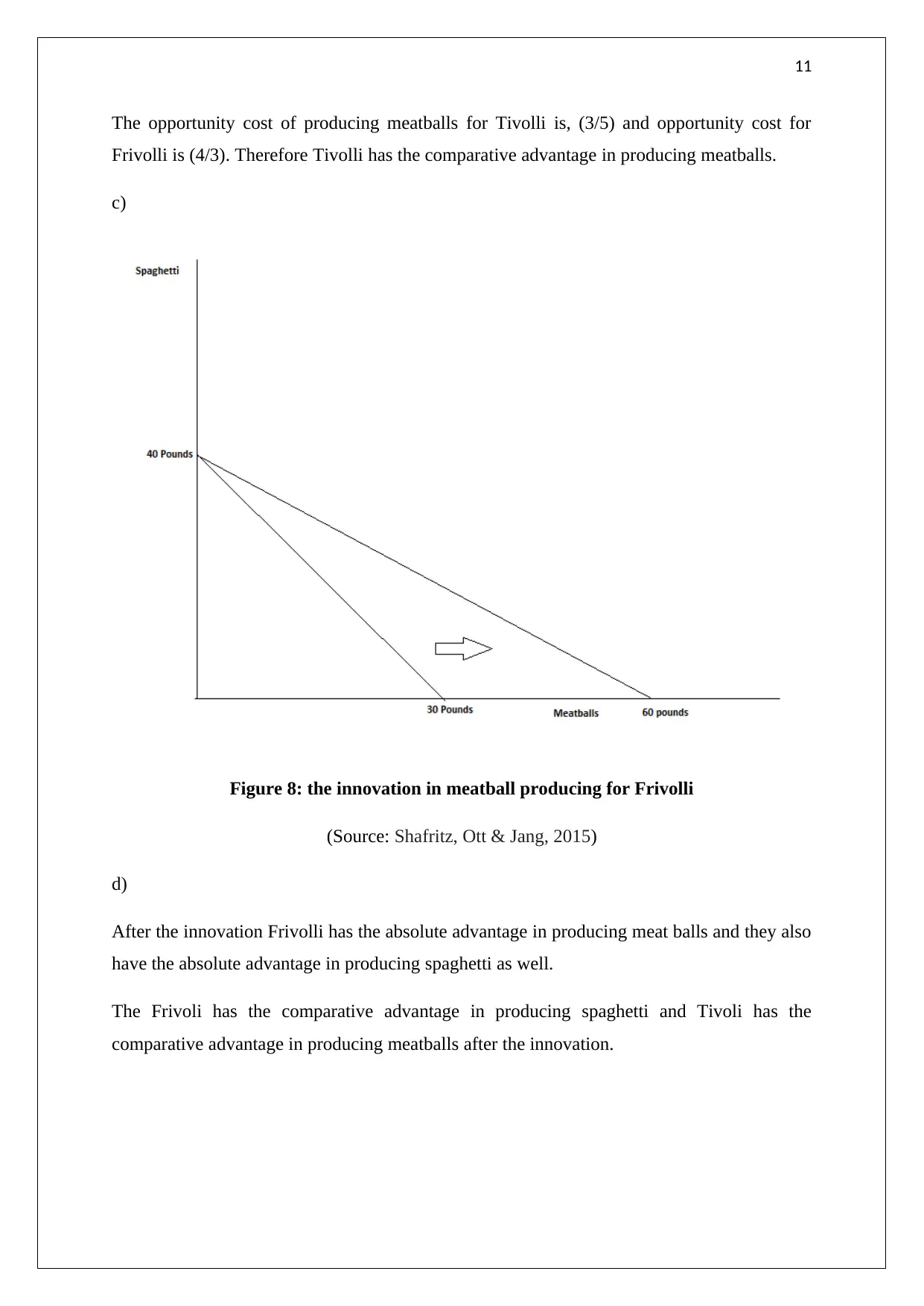
11
The opportunity cost of producing meatballs for Tivolli is, (3/5) and opportunity cost for
Frivolli is (4/3). Therefore Tivolli has the comparative advantage in producing meatballs.
c)
Figure 8: the innovation in meatball producing for Frivolli
(Source: Shafritz, Ott & Jang, 2015)
d)
After the innovation Frivolli has the absolute advantage in producing meat balls and they also
have the absolute advantage in producing spaghetti as well.
The Frivoli has the comparative advantage in producing spaghetti and Tivoli has the
comparative advantage in producing meatballs after the innovation.
The opportunity cost of producing meatballs for Tivolli is, (3/5) and opportunity cost for
Frivolli is (4/3). Therefore Tivolli has the comparative advantage in producing meatballs.
c)
Figure 8: the innovation in meatball producing for Frivolli
(Source: Shafritz, Ott & Jang, 2015)
d)
After the innovation Frivolli has the absolute advantage in producing meat balls and they also
have the absolute advantage in producing spaghetti as well.
The Frivoli has the comparative advantage in producing spaghetti and Tivoli has the
comparative advantage in producing meatballs after the innovation.
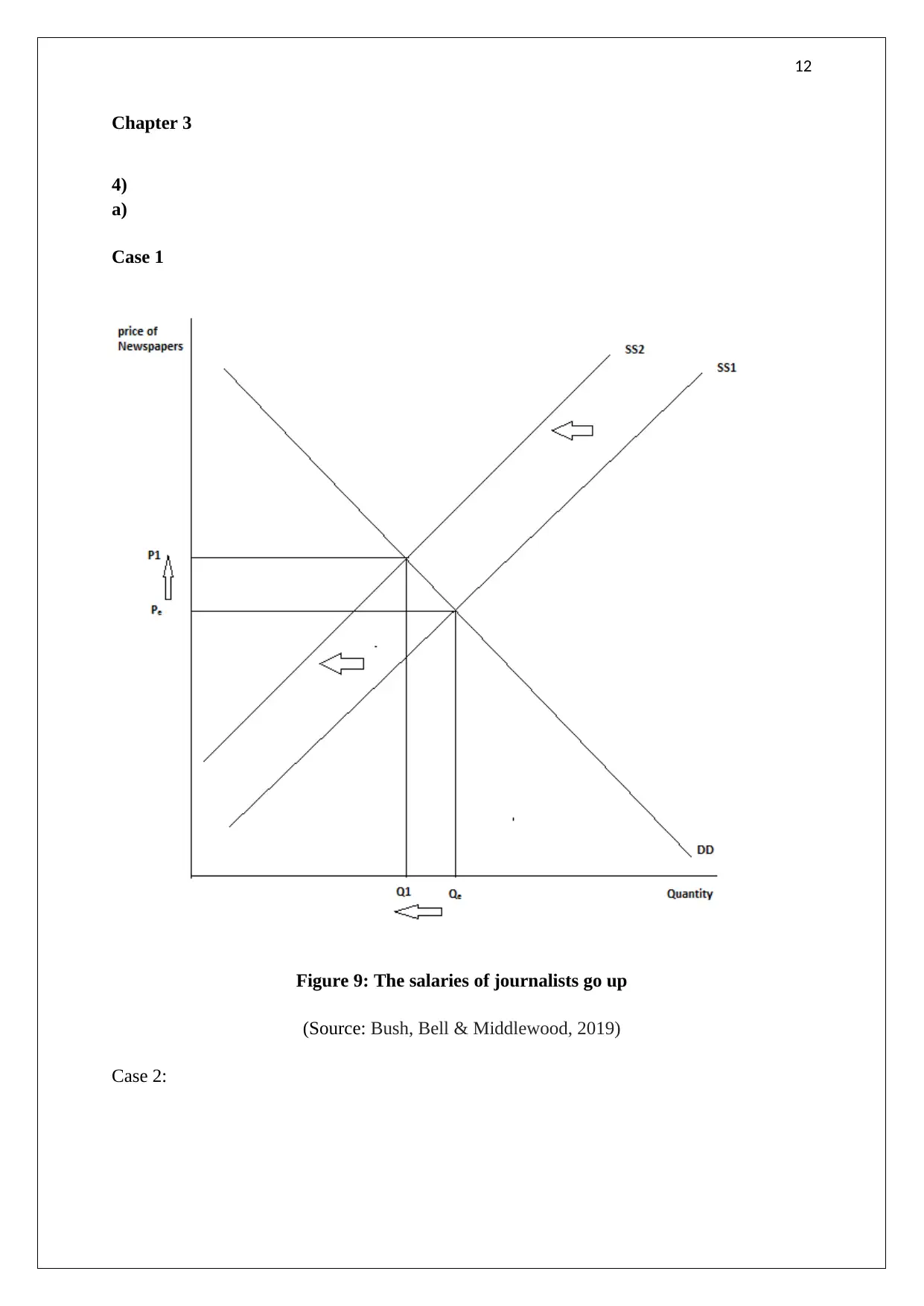
12
Chapter 3
4)
a)
Case 1
Figure 9: The salaries of journalists go up
(Source: Bush, Bell & Middlewood, 2019)
Case 2:
Chapter 3
4)
a)
Case 1
Figure 9: The salaries of journalists go up
(Source: Bush, Bell & Middlewood, 2019)
Case 2:
⊘ This is a preview!⊘
Do you want full access?
Subscribe today to unlock all pages.

Trusted by 1+ million students worldwide
1 out of 21
Your All-in-One AI-Powered Toolkit for Academic Success.
+13062052269
info@desklib.com
Available 24*7 on WhatsApp / Email
![[object Object]](/_next/static/media/star-bottom.7253800d.svg)
Unlock your academic potential
Copyright © 2020–2025 A2Z Services. All Rights Reserved. Developed and managed by ZUCOL.

